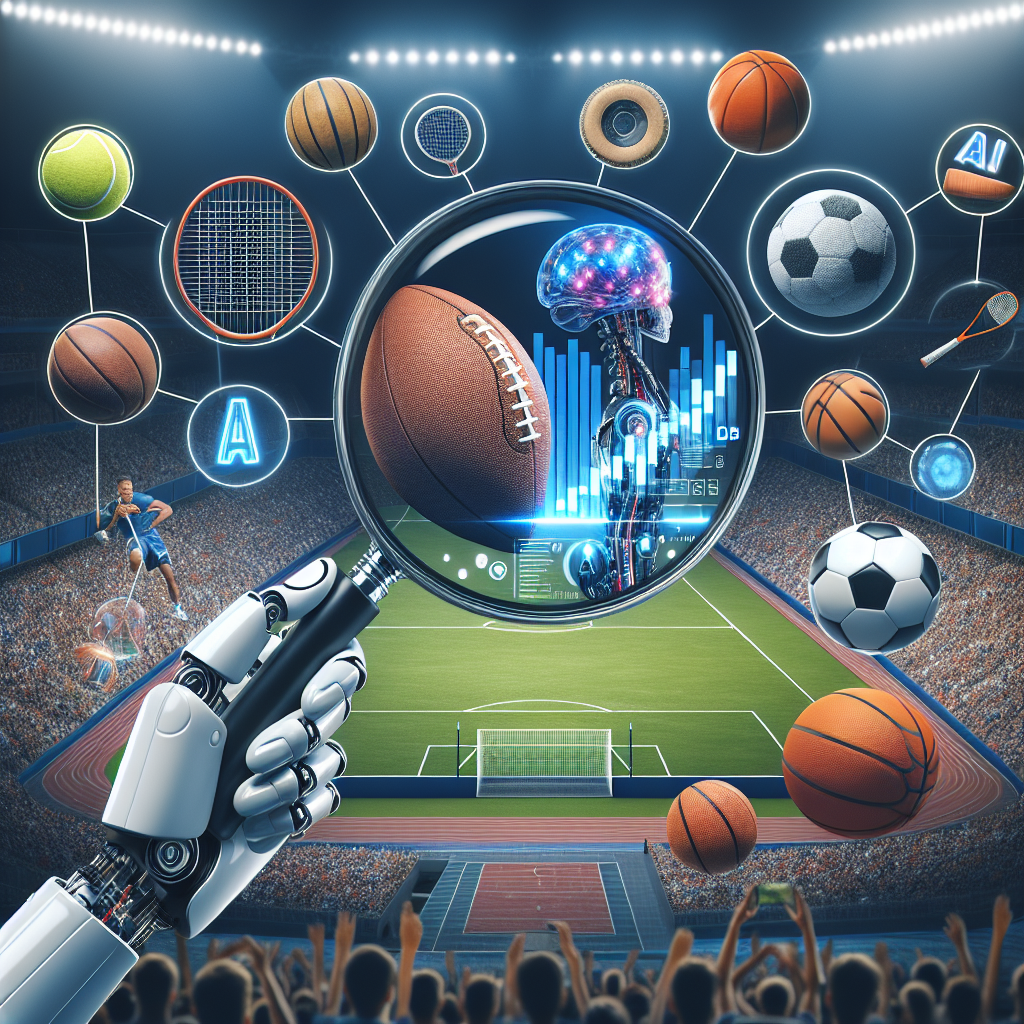Artificial Intelligence (AI) has been revolutionizing various industries, and sports is no exception. In recent years, AI has been increasingly used in sports talent identification and development, providing teams and athletes with valuable insights and data-driven decisions. This has led to more efficient scouting processes, improved player development, and ultimately, better performance on the field.
AI in sports talent identification involves using algorithms and machine learning models to analyze and assess a player’s performance, potential, and other relevant factors. By collecting and analyzing large amounts of data, AI can help coaches and scouts identify talented players who may have otherwise gone unnoticed. This can be particularly beneficial for sports like soccer, basketball, and baseball, where there are thousands of players competing for limited spots in professional leagues.
One of the key advantages of using AI in sports talent identification is its ability to provide objective and unbiased evaluations. Unlike human scouts who may have personal biases or preferences, AI algorithms can analyze data impartially and focus on the specific performance metrics that matter most. This can help teams make more informed decisions when selecting players for their rosters, reducing the risk of overlooking potential talent or making costly mistakes in the drafting process.
In addition to talent identification, AI can also play a crucial role in player development. By tracking and analyzing an athlete’s performance over time, AI can provide personalized training programs and feedback to help them improve their skills and reach their full potential. This can be particularly useful for young athletes who are still developing their skills and need guidance on how to improve.
Furthermore, AI can also be used to monitor and prevent injuries in athletes. By analyzing biomechanical data and movement patterns, AI can identify potential risk factors for injuries and help coaches and trainers develop strategies to prevent them. This can not only improve the overall health and well-being of athletes but also help teams maintain a competitive edge by keeping their key players healthy and on the field.
Overall, the use of AI in sports talent identification and development has the potential to revolutionize the way teams scout, train, and manage their players. By leveraging the power of data and analytics, teams can make more informed decisions, optimize player performance, and ultimately, achieve greater success on the field.
FAQs:
Q: How does AI analyze player performance in sports talent identification?
A: AI uses algorithms and machine learning models to analyze various performance metrics such as speed, agility, strength, and skill level. By collecting data from games, practices, and training sessions, AI can provide insights into a player’s strengths, weaknesses, and overall potential.
Q: Can AI predict which players will become successful in professional sports?
A: While AI can provide valuable insights and predictions based on data analysis, there are still many factors that contribute to a player’s success in professional sports. Factors such as work ethic, mental toughness, and adaptability also play a crucial role in determining an athlete’s success.
Q: How can teams integrate AI into their talent identification and development processes?
A: Teams can integrate AI by investing in data collection tools, analytics software, and AI algorithms that can analyze player performance data. By working with data scientists and sports analysts, teams can develop customized AI solutions that meet their specific needs and objectives.
Q: Is AI replacing human scouts in sports talent identification?
A: While AI can provide valuable insights and data-driven decisions, human scouts still play a crucial role in evaluating intangible qualities such as leadership, teamwork, and character. AI can complement the work of human scouts by providing objective data analysis and helping teams make more informed decisions.
Q: How is AI being used to prevent injuries in athletes?
A: AI analyzes biomechanical data and movement patterns to identify potential risk factors for injuries in athletes. By monitoring these factors and providing personalized training programs, AI can help athletes reduce their risk of injury and stay healthy throughout the season.

